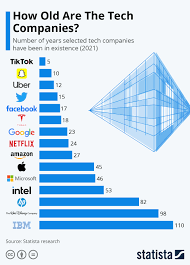Building Technology: Innovating the Future
Technology has revolutionised the way we design, construct, and inhabit buildings. Building technology encompasses a wide range of innovations that enhance efficiency, sustainability, and safety in the construction industry.
The Rise of Smart Buildings
Smart buildings are at the forefront of building technology. These structures are equipped with advanced systems that optimise energy usage, improve security, and enhance occupant comfort. From automated lighting and climate control to integrated IoT devices, smart buildings are transforming the way we interact with our living and working spaces.
Sustainable Construction Practices
In an era of increasing environmental awareness, sustainable construction practices have become a key focus in building technology. Green building materials, energy-efficient designs, and renewable energy sources are being integrated into construction projects to reduce carbon footprint and promote long-term sustainability.
Advancements in Building Materials
New materials such as carbon fibre composites, self-healing concrete, and nanotechnology coatings are pushing the boundaries of what is possible in construction. These innovative materials offer enhanced durability, strength, and flexibility while also addressing environmental concerns and reducing maintenance costs.
The Future of Building Technology
As technology continues to evolve at a rapid pace, the future of building technology holds exciting possibilities. From 3D printing of entire structures to AI-driven design processes, the next generation of buildings will be smarter, more sustainable, and more adaptable to changing needs.
In Conclusion
Building technology is not just about constructing physical spaces; it is about shaping the future of our built environment. By embracing innovation, sustainability, and collaboration in building practices, we can create spaces that are not only functional but also environmentally conscious and technologically advanced.
Five Essential Tips for Building Effective Technology Solutions
- Stay updated with the latest technology trends and advancements.
- Collaborate with other professionals in the field to exchange ideas and knowledge.
- Test your technology solutions thoroughly before implementing them.
- Prioritize user experience and usability in your technology designs.
- Always have a backup plan in case of technological failures or setbacks.
Stay updated with the latest technology trends and advancements.
It is crucial for professionals in the construction industry to stay updated with the latest technology trends and advancements in building technology. By keeping abreast of new developments, such as smart building systems, sustainable construction practices, and innovative building materials, individuals can enhance their knowledge and skills to meet the demands of an ever-evolving industry. Embracing new technologies not only improves efficiency and productivity but also ensures that projects are executed with cutting-edge solutions that benefit both the environment and end-users.
Collaborate with other professionals in the field to exchange ideas and knowledge.
Collaborating with other professionals in the field of building technology is essential for fostering innovation and growth. By exchanging ideas and knowledge with peers, architects, engineers, and designers can gain fresh perspectives, learn about new technologies, and stay up-to-date with industry trends. This collaborative approach not only enriches individual expertise but also leads to the development of more efficient, sustainable, and cutting-edge solutions in building design and construction.
Test your technology solutions thoroughly before implementing them.
It is crucial to thoroughly test your technology solutions before implementing them in building projects. By conducting rigorous testing, you can identify and address any potential issues or flaws early on, ensuring that the solutions function as intended and meet the required standards. Testing helps to mitigate risks, enhance reliability, and ultimately improve the overall performance of the technology integrated into construction processes. Investing time and resources in comprehensive testing procedures is essential for successful implementation and long-term sustainability of building technology solutions.
Prioritize user experience and usability in your technology designs.
When delving into the realm of building technology, it is crucial to prioritise user experience and usability in your design approach. By placing emphasis on how individuals interact with and navigate through the technology integrated within buildings, you can enhance efficiency, convenience, and overall satisfaction for occupants. Thoughtfully considering user needs and preferences ensures that the technology seamlessly integrates into daily routines, ultimately improving the functionality and effectiveness of the built environment.
Always have a backup plan in case of technological failures or setbacks.
In the realm of building technology, it is crucial to always have a contingency plan in place to address potential technological failures or setbacks. By anticipating and preparing for such challenges, construction projects can mitigate risks and ensure continuity in operations. Having a backup plan not only safeguards against unexpected disruptions but also demonstrates a proactive approach to problem-solving, ultimately contributing to the successful implementation of innovative building technologies.


